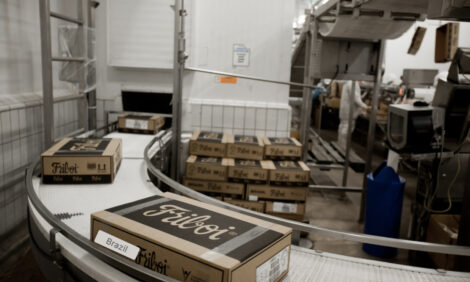



FAO Food Outlook - November 2012 - Overview
GLOBAL - Overview of the latest 'Food Outlook' report from FAO. Food prices are below the levels of last year and the value of global food imports is down 10 per cent.Highlights
Food prices have averaged eight per cent lower during the first 10 months of 2012 compared to the same period last year. Considerably lower international prices and freights, together with less cereal purchases are predicted to reduce global expenditures on imported foodstuffs. The 2012 forecast for global food import bills is set at US$1.14 trillion, 10 per cent lower than the record that was set last year.
Cereals
Global cereal supply and demand balance is forecast to tighten considerably in 2012/13, due mainly to declines in wheat and maize production. World cereal production is forecast to fall by 2.7 per cent from previous year's record crop, leading to a 25-million-tonne contraction in world stocks.
Wheat
A tightening in world supply and demand balance is keeping wheat prices above the 2011 levels. Latest information confirms a smaller wheat crop in 2012 and, with projected utilisation exceeding production, stocks are expected to be drawn down sharply, especially major exporters’ stocks. World trade in 2012/13 is forecast to fall below the previous season's peak.
Coarse Grains
World coarse grains supply and demand balance in 2012/13 is extremely tight with FAO's latest forecast for production in 2012 pointing to a 2.5 per cent decline from the 2011 record and stocks falling to historic lows, a factor which continues to underpin international prices.
Rice
World rice production in 2012 may surpass last season's record, supported by favourable growing conditions. Steadfast import demand together with very ample export availabilities are sustaining an expansion of trade in 2012, with a further, albeit small, increase foreseen in 2013.
Cassava
World cassava output is expected to increase vigorously in 2012 and may continue to do so in 2013, sustained by growth in Africa, where cassava remains a strategic crop for both food security and poverty alleviation. Prospects are more uncertain in Asia, where the sector expansion next year will largely depend the competitiveness of cassava in the production of ethanol relative to other feedstocks. In 2012, world trade in cassava products is set to undergo a marked increase, entirely sustained by industrial demand.
Oilseeds
The 2012/13 oilcrop season is opening under the legacy of a tight 2011/12 balance and a disappointing soybean crop in the United States. Current supply and demand forecasts for the new season provide limited scope for a relaxation in prices – at least until prospects for record South American soy crops are confirmed.
Sugar
World sugar production is forecast to reach a new record, more than sufficient to cover projected global sugar consumption. Large export availabilities in key supplying countries, along with a rebuilding of sugar inventories in major importing countries, are expected to boost trade in 2012/13.
Meat
Global meat markets are challenged by high feed prices, stagnating consumption, and falling profitability, with growth in total output slowing down to two per cent. With international prices close to record highs, growth in world trade is also decelerating.
Milk
International prices of dairy products are rising in the face of limited export supplies. Milk production continues to grow in many countries, especially in Asia, Oceania and South America.
Fish
Weakening import demand caused international fish prices to drop in the first half of 2012. The
dip mainly affected farmed species, while quotations for wild fish, such as tuna, fared better.
Report extract is courtesy of FAO.
Further ReadingYou can view the full report by clicking here. |
November 2012









